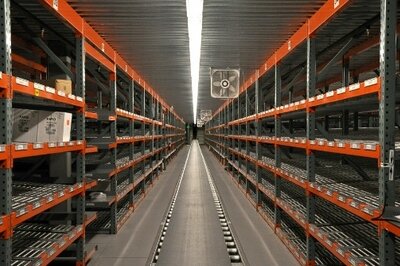4 tools your distribution ERP needs for efficient warehouse management
“The monkey chased the weasel”... so goes the venerable rhyme, Pop Goes the Weasel.
Does that line describe your warehouse management processes? Do your people spend time moving a lot of products you can’t sell and looking for the product your customer wants that is supposed to be on hand and ready to ship out? Do you think a new distribution ERP system can help?
Warehouse management aims to make every action in the warehouse a value-adding action. An ERP for a distribution business is the toolset you need to accomplish this goal.
Slotting automation
A product arrives from your supplier. ERP warehouse management modules can tell you what orders require that product and when they are due to ship out. ERP can also suggest the best place to move that product to from the receiving dock. It might even suggest splitting the receipt so part is close at hand for a shipment tomorrow and the remaining balance is stored for another shipment next week. The best warehouse logic is stored in a good distribution ERP, so your workers can almost always simply follow the suggestions it provides.
Order priority
A customer places an order. ERP should quickly evaluate whether all the items are available now and, if not, when they should be based on expected incoming deliveries. Depending on the expected time of the delivery, the ERP might suggest you begin to pick the order now or suggest the time is better spent picking another order that can be shipped on time. Some orders must be shipped complete and others allow shipping of lines that are available now. Some customers will always have priority and orders for those customers should be scheduled for picking to ensure on-time delivery, perhaps even to the detriment of another customer’s order.
Picking priority
Your warehouse crew gets orders for picking throughout the day. The picking orders generated by ERP warehouse management modules will be based on planned customer shipments, but should be seen by the pickers as sorted by stock location for more efficient work planning. Labor efficiency is important so that costs can be reduced and optimized for the business actually on hand.
Recommended reading: seven steps to selecting your perfect distribution ERP.
Surplus inventory management
You place purchase orders for products based on your best demand forecasts. But customers will change their requirements and inventory will deteriorate – that is just a part of the distribution business. A thorough distribution ERP will help monitor your entire inventory including products that do not sell or cannot be sold, so that quick action can be taken on these items. Can it be returned? Should you move it to the dumpster? Whatever needs to be done, inventory should never sit on the shelf not moving.
A distribution ERP with warehouse management will help keep the right products in the right locations and keep your crews working efficiently to serve your customers. That sounds better than chasing a weasel, doesn’t it?
Free white paper

7 steps to selecting distribution ERP
Get expert advice on distribution ERP selection and requirements analysis

Related articles
-

7 Innovative Trends in ERP Warehouse Management
Find out more about the innovations in ERP warehouse management which are changing the way distri...
-

Secret KPI: Why Your ERP Implementation Team Matters More Than Software
Learn how Godlan ensures successful ERP implementation for manufacturers with proven strategies &...
-

How to Manage Internal Logistics Using Your ERP Software
Learn about the challenges of internal logistics management and how ERP can help your business ov...

